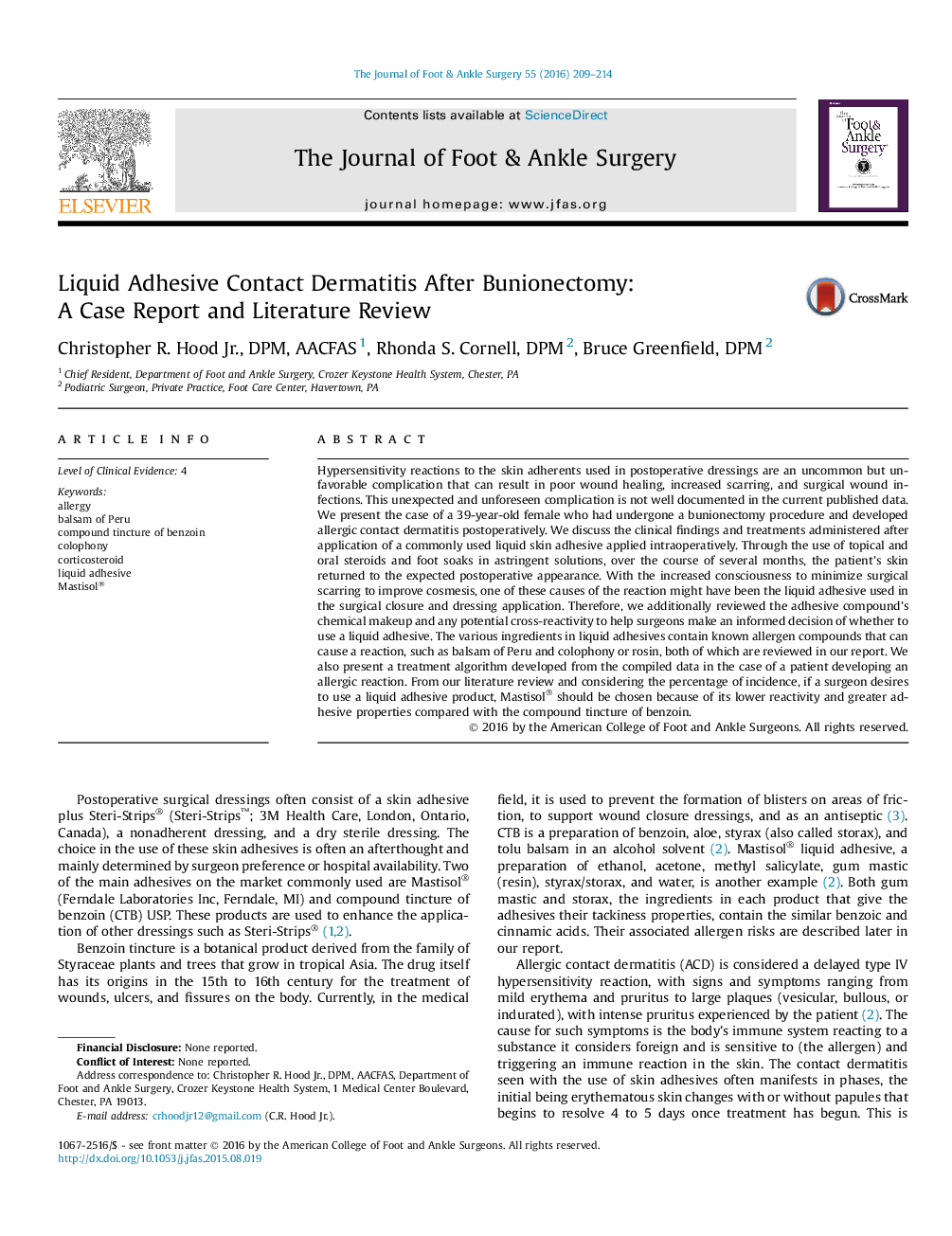| Article ID | Journal | Published Year | Pages | File Type |
|---|---|---|---|---|
| 2719334 | The Journal of Foot and Ankle Surgery | 2016 | 6 Pages |
Hypersensitivity reactions to the skin adherents used in postoperative dressings are an uncommon but unfavorable complication that can result in poor wound healing, increased scarring, and surgical wound infections. This unexpected and unforeseen complication is not well documented in the current published data. We present the case of a 39-year-old female who had undergone a bunionectomy procedure and developed allergic contact dermatitis postoperatively. We discuss the clinical findings and treatments administered after application of a commonly used liquid skin adhesive applied intraoperatively. Through the use of topical and oral steroids and foot soaks in astringent solutions, over the course of several months, the patient’s skin returned to the expected postoperative appearance. With the increased consciousness to minimize surgical scarring to improve cosmesis, one of these causes of the reaction might have been the liquid adhesive used in the surgical closure and dressing application. Therefore, we additionally reviewed the adhesive compound’s chemical makeup and any potential cross-reactivity to help surgeons make an informed decision of whether to use a liquid adhesive. The various ingredients in liquid adhesives contain known allergen compounds that can cause a reaction, such as balsam of Peru and colophony or rosin, both of which are reviewed in our report. We also present a treatment algorithm developed from the compiled data in the case of a patient developing an allergic reaction. From our literature review and considering the percentage of incidence, if a surgeon desires to use a liquid adhesive product, Mastisol® should be chosen because of its lower reactivity and greater adhesive properties compared with the compound tincture of benzoin.
